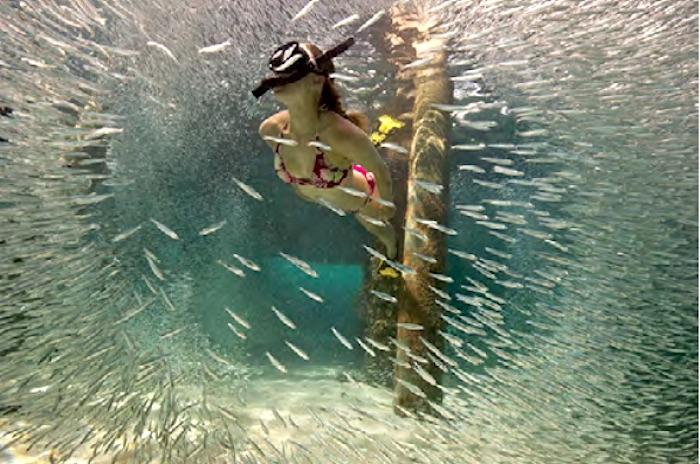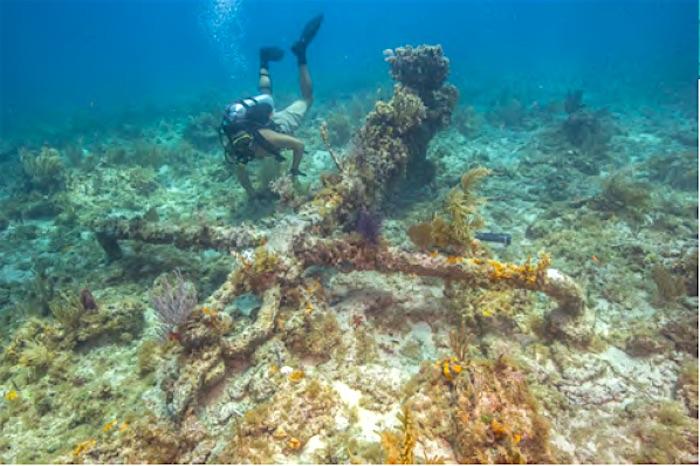
Editor's note: The following is advertiser-supported content from the Essential Park Guide, Fall 2018.
Located approximately 70 miles west of Key West is Garden Key, the site of historic Fort Jefferson National Monument located within the Dry Tortugas National Park. Over 60,000 visitors are either ferried on a state-of-the-art catamaran out of Key West called the Yankee Freedom III or fly here via seaplane every year. It is, without a doubt, one of the least accessible and one of the most remote national parks in the nation and that, as it turns out, is a very good thing.
The grounds here are very well cared for and maintained. Time has largely stood still here since the fort’s decommissioning and you won’t be inundated with eager tourists that would otherwise threaten to disturb the natural order of things out here. If someone wants to experience this fantastic oasis, then they’ve got to make a special effort to do so. All of these factors ensure that this exceptional chain of islands on the outskirts of the Gulf of Mexico remains the tranquil, raw, and beautiful place that it is.
Besides its isolated geographic location, the thing that sets this national park apart from all the others is that a majority of it isn’t anywhere you can walk or hike to. It’s underwater.
If you were to see a birds-eye view of this 11-mile island chain with the great, imposing fort at its center, you would notice clusters of reef beneath a sea of deep blues and greens virtually everywhere you looked. Divers of all stripes and skill levels flock here to witness the stunning marine life, coral formations, and seagrass beds that appear as submerged islands encroaching on the larger ones above the water line. The park consists of 46 square miles of protected reef, which is all part of an even larger marine sanctuary that spans 151 square nautical miles. Yes, there is a lot of ground, or, rather, sea to cover here for the adventurous diver; however, for those arriving with Yankee Freedom III, the prime snorkeling spots are all fairly close to shore.

Visitors to Dry Tortugas not only spend their days kayaking around Fort Jefferson, but also donning flippers, masks, and snorkels to get closer to the marine life / NPS
Once you strap on your fins and get your mask and snorkel all situated, you’re ready for some first-rate undersea exploration mere feet from shore. One of the many reasons this part of the world is so ideal for diving is that the depth of the water is relatively shallow. Just outside the park, however, the water can reach a depth of 100 feet and one should be mindful of the currents in these outer reaches should you decide to venture outside the boundaries of the park reefs.
So, what can you expect to see down there?
With a name like the Dry Tortugas, it’s reasonable to expect to see some sea turtles and you’d be right. When Spanish explorer Ponce de Leon discovered this place and gave it its name in 1513, he noticed an abundance of loggerhead, green, and leatherback turtles occupying the soft sandy beaches for their nesting grounds. Originally called Las Tortugas, it was later changed as a warning to sailors and seafarers that the area offered no sources of potable water.
The parade of color on display around the neighboring reefs has few equals. The sealife appears as if painted by a very skilled hand and vibrant hues of every shade decorate this amazing underwater landscape. It is a competitive environment for the fish down there that rely on the reef ’s bounty for their livelihood, so they’ve learned to adapt crafty survival techniques through natural selection. Larger fish with a more cylindrical shape can always opt for greener pastures, as it were, because they are better suited to swimming in the open ocean, whereas, an angel fish, with its small, flat profile can maneuver with ease in the labyrinthine nooks and crannies of the reef ’s many coral formations where macroscopic algae, diatoms and small crustaceans are often found.
Some of the more common inhabitants in these waters are butterfly fish with their small mouths, large pectoral fins and friendly demeanor, grouper, snapper, wahoos, tarpon and the ubiquitous barracuda. Massive starlet corals, brain corals and colorful sea fans make up a thriving ecosystem that is simply astonishing to witness. For an even more intimate encounter, you can snorkel the fort’s moat wall at night where you’ll see marine life that favors to nocturnally roam the seabed, such as octopus and lobster. Also, the reef fish that were so elusive during the day are much more docile and easily approachable at this time.

Diving at Dry Tortugas National Park means exploring reefs teeming with colorful fish as well as long ago wrecks / NPS
The other prized attraction that lures the multitudes who dive these waters are the shipwrecks. The Dry Tortugas is home to over 200 wrecks that help preserve this delicate ecosystem by acting as artificial reefs. Because of the currents, severe weather, and numerous shallows, ships seeking passage through here have often met a disastrous fate, hence the need for the lighthouse that still stands on Loggerhead Key.
The three-masted, iron-hulled, sailing ship known as the Windjammer is the most popular wreck in the park and most accessible to snorkelers as it’s only in 20 feet of water. The ship was hauling lumber en route to Montevideo, Uruguay, in 1901 when it ran aground and ultimately sank. Great visibility and a home for fish ranging from 200-pound jewfish to small tropicals make this a hot-spot for diving enthusiasts.
Other suggested spots to investigate at and around the park are Little Africa, Texas Rock, Pulaski Shoals, and Long Key Reef. For scuba trips to these locations, please consult with local diving companies.
If ever there was a national park worth your attention, it’s this one. Make sure to book a trip on the Yankee Freedom III well in advance and you’ll discover a universe that welcomes you into its watery arms.



Add comment